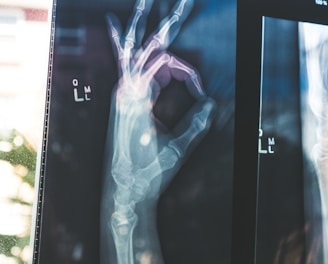Patient Outcomes Analytics: Clinical Intelligence That Drives Better Care
Transform clinical data into actionable insights for improved patient outcomes, reduced readmissions, and enhanced quality measures


Actionable Insights
Patient outcomes analytics goes beyond basic reporting to provide healthcare organizations with deep insights into clinical performance, quality measures, and patient care effectiveness. Unlike generic business intelligence tools that treat healthcare data like any other industry, Vizier's patient outcomes analytics understands the clinical context behind every metric—from 30-day readmission rates and mortality indicators to patient satisfaction scores and length of stay optimization.
Built specifically for healthcare workflows, our platform helps clinical teams, quality directors, and healthcare administrators identify patterns in patient care that directly impact outcomes. Whether you're tracking HEDIS measures, analyzing risk-adjusted mortality rates, or monitoring post-discharge follow-up compliance, Vizier provides the clinical intelligence needed to improve patient care while meeting regulatory requirements across US MIPS programs, UK NHS quality frameworks, and international healthcare standards.
Understanding Clinical Outcomes in Healthcare Practice
Clinical outcomes tracking in healthcare encompasses far more than basic patient statistics. It involves the systematic measurement and analysis of how medical interventions, care protocols, and treatment decisions directly impact patient health, recovery rates, and long-term wellness. For healthcare organizations, effective outcomes tracking means monitoring everything from immediate post-operative complications and infection rates to chronic disease management effectiveness and preventive care success.
The most critical clinical outcomes that healthcare teams track include 30-day readmission rates, which directly impact both patient care quality and Medicare reimbursements under value-based care models. Hospital-acquired infection rates, surgical site infections, and catheter-associated urinary tract infections (CAUTIs) represent key safety indicators that quality departments monitor continuously. Length of stay optimization helps balance quality care with operational efficiency, while mortality rates adjusted for patient acuity provide insights into clinical effectiveness across different patient populations.
Patient satisfaction scores, while often viewed as administrative metrics, actually correlate strongly with clinical outcomes and represent an important indicator of care quality. Medication adherence rates, follow-up appointment compliance, and care plan adherence all influence long-term patient outcomes and represent areas where analytics can identify improvement opportunities.
Modern clinical outcomes tracking also includes population health metrics such as diabetes management effectiveness, hypertension control rates, and preventive screening compliance. These metrics help healthcare organizations identify gaps in care delivery and develop targeted interventions for specific patient populations.
Quality Measures & Compliance
Healthcare quality measures represent standardized metrics that evaluate care delivery effectiveness, patient safety, and clinical outcomes across healthcare organizations. These measures form the foundation of value-based care reimbursement models and regulatory compliance requirements that healthcare providers must meet to maintain accreditation and optimize revenue streams.
In the United States, MIPS (Merit-based Incentive Payment System) quality measures directly impact Medicare reimbursements, with practices facing up to 9% payment penalties for poor performance or earning bonus payments for exceptional outcomes. Key MIPS quality measures include diabetes management indicators like HbA1c control rates, blood pressure management for hypertensive patients, and preventive care screening compliance rates for colonoscopies, mammograms, and immunizations.
Hospital quality measures focus on patient safety indicators such as central line-associated bloodstream infections (CLABSIs), surgical site infection rates, and hospital-acquired pressure ulcer prevention. The Joint Commission and CMS Hospital Quality Initiative track these metrics closely, with public reporting requirements that affect hospital reputation and reimbursement rates.
For UK healthcare organizations, Quality and Outcomes Framework (QOF) measures evaluate chronic disease management, preventive care delivery, and patient experience indicators. EU healthcare systems emphasize patient safety measures, clinical effectiveness indicators, and patient-reported outcome measures (PROMs) that assess treatment effectiveness from the patient perspective.
Compliance analytics help healthcare organizations automate quality measure calculations, identify performance gaps before reporting deadlines, and implement targeted interventions to improve scores. Rather than manual spreadsheet tracking that consumes administrative time, automated quality measure analytics provide real-time insights into performance trends and alert clinical teams to patients who may be falling through care gaps.
Patient Outcomes Analytics in Clinical Practice


Hospital Quality & Patient Safety
Hospital systems leverage outcomes analytics to reduce surgical site infections by analyzing patterns across different surgical teams, operating room protocols, and post-operative care procedures. Quality directors track hospital-acquired infection rates, readmission patterns, and length of stay optimization to meet Joint Commission requirements and improve patient safety indicators.
Specialty Care Coordination
Cardiology practices monitor heart failure patients' readmission patterns, identifying medication adherence issues and follow-up care gaps that predict repeat hospitalizations. Oncology departments track treatment response rates, side effect management, and quality of life measures to optimize cancer care protocols and patient outcomes.
Primary Care & Chronic Disease Management
Primary care practices use outcomes analytics to identify diabetic patients whose HbA1c levels indicate poor glucose control, enabling proactive outreach before complications develop. Family medicine physicians track hypertension management effectiveness, medication adherence patterns, and preventive screening compliance to improve MIPS quality scores while enhancing patient care.
Emergency Department Efficiency
Emergency departments use outcomes analytics to track patient flow, reduce length of stay while maintaining care quality, and identify clinical decision patterns that impact patient satisfaction scores. ED directors analyze diagnostic accuracy rates, treatment protocols, and discharge planning effectiveness to improve both clinical and operational outcomes.
Population Health Management
Healthcare organizations use outcomes analytics to identify community health trends, vaccination compliance rates, and preventive care gaps across different demographic groups. These insights help develop targeted outreach programs and address social determinants of health that impact patient outcomes.
ROI & Clinical Impact
Patient outcomes analytics delivers quantifiable returns on investment through improved clinical performance, reduced regulatory penalties, and enhanced operational efficiency. Healthcare organizations implementing comprehensive outcomes tracking typically see 15-25% reduction in 30-day readmission rates within the first year, translating to significant cost savings and improved Medicare reimbursements under value-based care contracts.
Primary care practices using outcomes analytics for MIPS quality measure optimization avoid Medicare payment penalties averaging 4-7% of total reimbursements while earning positive payment adjustments for high-performing quality scores. A typical family medicine practice with $2 million annual Medicare revenue can save $80,000-$140,000 annually by improving MIPS performance through systematic outcomes tracking and clinical intervention protocols.
Hospital systems report substantial cost reductions through infection prevention analytics, with surgical site infection reduction programs saving $15,000-$25,000 per prevented infection when accounting for extended length of stay, additional treatment costs, and liability exposure. Central line-associated bloodstream infection (CLABSI) prevention through outcomes analytics generates even higher savings, with each prevented CLABSI worth approximately $45,000 in avoided costs.
Emergency departments using patient flow and outcomes analytics reduce average length of stay by 20-30 minutes per patient, increasing capacity without additional staffing costs. This efficiency improvement enables emergency departments to treat 8-12% more patients annually while improving patient satisfaction scores that impact hospital reputation and market share.
Chronic disease management programs enhanced with outcomes analytics demonstrate improved patient engagement rates, with diabetes management programs showing 25-35% improvement in HbA1c goal achievement and 40% reduction in diabetes-related emergency department visits. These clinical improvements reduce long-term healthcare costs while generating shared savings revenue in accountable care organization contracts.
Quality directors report 60-75% reduction in time spent on manual quality measure calculations and regulatory reporting when using automated outcomes analytics platforms. This administrative efficiency allows quality teams to focus on clinical improvement initiatives rather than data collection, improving both job satisfaction and organizational performance.
How Vizier Delivers Patient Outcomes Analytics
Vizier's patient outcomes analytics platform integrates seamlessly with existing healthcare data systems to provide comprehensive clinical intelligence without disrupting established workflows. Unlike generic business intelligence tools that require months of customization to understand healthcare data structures, Vizier recognizes clinical terminology, regulatory requirements, and healthcare-specific metrics from day one.
The platform processes data from electronic health records (EHRs), practice management systems, and hospital information systems to automatically calculate quality measures, track patient outcomes, and identify clinical performance trends. Healthcare organizations simply upload their existing data exports—whether from Epic, Cerner, Allscripts, or other clinical systems—and Vizier immediately begins generating actionable insights tailored to healthcare workflows.
Clinical teams access patient outcomes analytics through intuitive dashboards designed specifically for healthcare professionals, not business analysts. Physicians view readmission risk scores alongside patient care plans, quality directors monitor infection rates with drill-down capabilities to identify specific units or procedures, and administrators track regulatory compliance status with automated alerts for patients approaching quality measure deadlines.
The conversational analytics feature allows healthcare users to ask natural language questions like "Show me diabetic patients with poor HbA1c control in the last quarter" or "What's our surgical site infection rate compared to national benchmarks?" This healthcare-native approach eliminates the need for complex query building or technical training that often prevents clinical adoption of traditional BI tools.
Vizier's platform maintains HIPAA compliance throughout the analytics process, with audit trails that track data access and user activity for regulatory reporting requirements. Healthcare organizations retain full control over their data while gaining the analytical capabilities needed to improve patient outcomes and meet value-based care objectives.
Integration typically requires minimal IT support, with most healthcare organizations achieving full deployment within 2-4 weeks rather than the 6-12 month implementations common with traditional healthcare BI solutions. This rapid deployment means clinical teams can begin using patient outcomes insights immediately to improve care delivery and quality performance.
Start Improving Patient Outcomes Today
Ready to transform your clinical data into actionable patient outcomes insights? Vizier's healthcare analytics platform helps clinical teams improve quality measures, reduce readmissions, and enhance patient care without the complexity of traditional business intelligence tools.
See how leading healthcare organizations use patient outcomes analytics to achieve measurable clinical and financial results. Our interactive demo showcases real healthcare scenarios including readmission risk analysis, quality measure tracking, and infection prevention analytics.


Insights
Transforming healthcare data into actionable insights.
Trust
Connect
info@vizier.health
© 2025 The Algorithm. All rights reserved.
